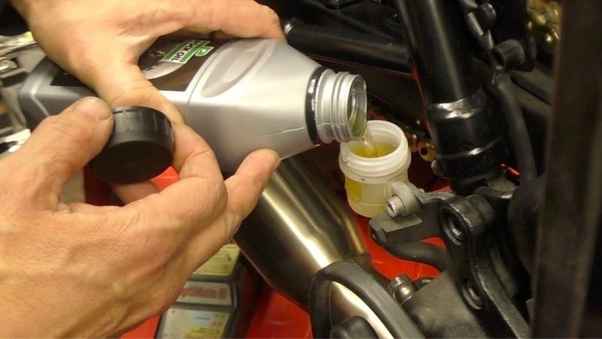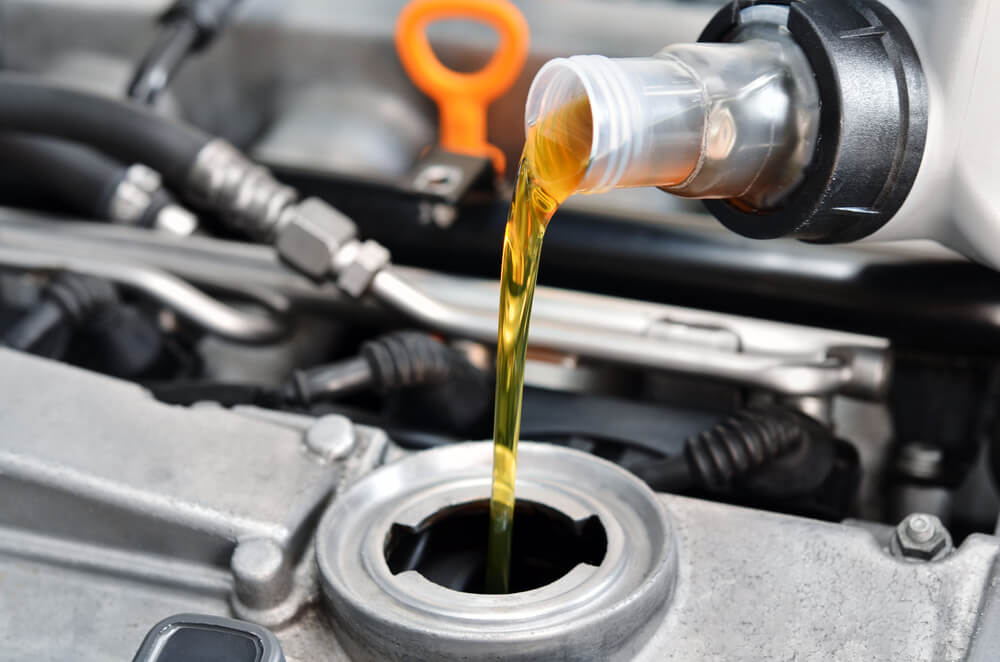Title: “The Impact of a Small Amount of Motor Oil in Your Transmission: Causes, Effects, and Solutions”
Introduction:
Your vehicle’s transmission is a complex and crucial component, responsible for transferring power from your engine to the wheels, enabling you to move forward and backward. It operates smoothly, shifting gears with precision, ensuring your driving experience is seamless. However, even a small amount of motor oil finding its way into the transmission can disrupt this harmonious process and lead to a cascade of issues. In this blog, we’ll delve into the causes, effects, and solutions related to the presence of motor oil in your transmission. Understanding this problem is essential for the longevity and performance of your vehicle, so let’s explore the intricacies of this potentially troublesome situation.
Causes of Motor Oil Contamination
Motor oil contamination in your transmission can be a significant source of concern for any vehicle owner. This issue can lead to a host of problems and, if left unaddressed, can result in costly repairs. Understanding the root causes of motor oil contamination is essential to prevent it from occurring and ensure your vehicle’s transmission stays in optimal condition. Let’s delve into the primary culprits behind this troublesome problem:
- Leakage from Engine Components: One common cause of motor oil contamination in the transmission is oil leaks from various engine components. This can occur due to deteriorating gaskets, seals, or even a cracked engine block. When motor oil leaks from the engine, it can find its way into the transmission, causing a problematic mix of fluids. Regularly inspecting and maintaining your engine’s components can help prevent such leaks.
- Inaccurate Oil Change or Maintenance Procedures: Incorrect oil change or maintenance procedures can inadvertently lead to motor oil contamination. If an oil change is performed carelessly, there is a risk of spilling or splashing oil into areas where it shouldn’t be. It’s crucial to entrust oil changes and vehicle maintenance to experienced professionals who follow proper protocols to avoid these mishaps.
- Faulty Gaskets or Seals: Gaskets and seals play a vital role in sealing various parts of your vehicle, including the engine and transmission. Over time, these components can wear out or become damaged, leading to leaks. If the gaskets or seals connecting the engine and transmission are compromised, it can result in the unwanted mixture of motor oil with transmission fluid. Regular inspection and timely replacement of these components are essential to prevent such issues.
- Improper Fluid Fill Procedures: During routine maintenance, especially when topping off transmission fluid or adding motor oil, it’s essential to use the right filling points and ensure the right fluids are introduced. Mixing up the filling points or using the incorrect type of oil can result in contamination. Always follow manufacturer recommendations and guidelines when adding fluids to your vehicle.
By understanding and addressing the causes of motor oil contamination in your transmission, you can safeguard your vehicle’s performance and extend its lifespan. Regular maintenance, proactive inspections, and professional assistance when needed are key to maintaining a trouble-free driving experience.
Signs and Symptoms of Motor Oil Contamination in Your Transmission
Detecting motor oil contamination in your transmission early is crucial to preventing extensive damage and costly repairs. The signs and symptoms associated with this issue can serve as valuable indicators, helping you identify the problem before it escalates. Here, we’ll explore the key red flags to look out for:
- Unusual Shifting Behavior: One of the most noticeable signs of motor oil contamination is a change in your vehicle’s shifting behavior. You may experience delayed or rough gear changes, unexpected jerks, or slipping gears. This can result from the improper lubrication of transmission components due to the presence of motor oil.
- Unusual Noises: If you hear unusual noises, such as grinding, whining, or clunking, when your vehicle is shifting gears, it could indicate a transmission problem, including motor oil contamination. These noises are often a result of increased friction and wear within the transmission.
- Fluid Discoloration: When checking your transmission fluid, if you notice that it has a milky or brownish appearance rather than the usual clear, red or brown color, this is a strong sign of contamination. The presence of motor oil can alter the fluid’s consistency and color.
- Burning Odor: A burning smell while driving is a concerning sign. It could mean that the transmission is overheating due to improper lubrication, potentially caused by motor oil contamination.
- Transmission Warning Light: If your vehicle is equipped with a transmission warning light, it may illuminate when issues are detected. This could include problems associated with motor oil contamination. Don’t ignore warning lights; have your vehicle inspected promptly.
- Loss of Power: Motor oil contamination can lead to a decrease in your vehicle’s overall performance. You may experience reduced power, sluggish acceleration, or difficulty maintaining consistent speeds.
- Transmission Fluid Leaks: Sometimes, a noticeable leak of discolored fluid from your vehicle’s transmission area can signal a problem. This may be the result of contaminated transmission fluid, causing damage to seals and gaskets.
- Check Engine Light: In some cases, the check engine light may come on, signaling that the engine or transmission is not operating within normal parameters. This light can be triggered by various issues, including motor oil contamination.
Being vigilant about these signs and symptoms can help you take swift action to address any motor oil contamination in your transmission. If you notice any of these red flags, it’s essential to consult a professional mechanic for a thorough diagnosis and appropriate repairs. Timely intervention can save you from costly transmission issues down the road.
Potential Damage and Consequences of Motor Oil Contamination in Your Transmission
Motor oil contamination in your vehicle’s transmission is a problem that should not be taken lightly. If left unaddressed, it can lead to a cascade of issues that not only compromise your vehicle’s performance but also result in significant financial consequences. Understanding the potential damage and consequences is essential to emphasize the importance of taking action. Here’s what can happen when motor oil infiltrates your transmission:
- Reduced Transmission Efficiency: The primary role of transmission fluid is to lubricate the components within the transmission and ensure smooth gear shifts. When motor oil mixes with the transmission fluid, it disrupts this lubrication, leading to increased friction and wear. This, in turn, can cause the transmission to function less efficiently, resulting in poor performance and reduced fuel economy.
- Gear Slippage: One of the most common issues stemming from motor oil contamination is gear slippage. This occurs when the transmission struggles to maintain the desired gear, often causing jerks or sudden shifts. Gear slippage can not only be frustrating but also dangerous, especially in situations that require precise control, such as overtaking or climbing steep grades.
- Overheating and Damage: Improper lubrication due to motor oil contamination can lead to increased friction within the transmission, causing it to overheat. Overheating can lead to severe damage to transmission components, necessitating costly repairs or even a full transmission replacement.
- Premature Wear and Tear: As motor oil is not designed to provide the same level of protection and lubrication as transmission fluid, its presence can accelerate the wear and tear of critical transmission parts. This can lead to components breaking down and further compounding the repair costs.
- Safety Concerns: A contaminated transmission can result in erratic shifting and unpredictable vehicle behavior. This poses safety risks not only to you as the driver but to other road users as well. Sudden gear changes or gear slippage can lead to accidents and collisions.
- Increased Maintenance Costs: Fixing a transmission that has been contaminated by motor oil is an expensive endeavor. Depending on the extent of the damage, it may require a complete transmission rebuild or replacement. The longer the issue goes unresolved, the higher the repair bill will be.
Vehicle Downtime: While your vehicle is undergoing repairs, you’ll experience downtime, and you might need alternative transportation arrangements. This can be an inconvenience and an additional expense
Steps to Resolve the Issue of Motor Oil Contamination in Your Transmission
Motor oil contamination in your transmission is a problem that demands swift action to prevent further damage and maintain your vehicle’s performance. Fortunately, there are steps you can take to resolve this issue effectively. Here’s a concise guide on how to tackle the problem:
- Immediate Action: If you suspect motor oil contamination, stop driving your vehicle immediately. Continuing to operate the vehicle in this condition can exacerbate the damage. Park your vehicle in a safe location and turn off the engine.
- Professional Inspection: Seek the expertise of a professional mechanic who specializes in transmissions. They will conduct a thorough inspection to confirm the presence of motor oil contamination and assess the extent of the damage. This step is crucial in determining the appropriate course of action.
- Fluid Drain and Flush: In cases of minor contamination, a fluid drain and flush might suffice. The contaminated transmission fluid is drained, and the system is flushed with the correct transmission fluid to remove any remnants of motor oil. This process helps restore the transmission’s proper function.
- Seal or Gasket Replacement: If the contamination is due to faulty seals or gaskets, these components will need replacement. New, properly functioning seals and gaskets ensure that motor oil is kept away from the transmission fluid.
- Comprehensive Repair: In more severe cases where the transmission has sustained significant damage, a comprehensive repair or rebuild may be necessary. This involves disassembling the transmission, inspecting and replacing damaged parts, and then reassembling the transmission to factory specifications.
- Transmission Replacement: In the worst-case scenario, when the damage is beyond repair, a complete transmission replacement may be required. While this is the most costly option, it ensures that your vehicle’s transmission operates optimally.
- Use the Right Fluids: After addressing the issue, make sure that the correct transmission fluid is used during the refilling process. Using the wrong fluid can lead to further complications.
- Regular Maintenance: To prevent future motor oil contamination, commit to regular vehicle maintenance. Stay on top of oil changes and inspect your vehicle’s seals and gaskets for any signs of wear and tear. Keeping these components in good condition can significantly reduce the risk of contamination.
- Transmission Service Schedule: Adhere to the manufacturer’s recommended transmission service schedule. Regular servicing helps ensure the longevity and reliability of your transmission.
- Drive Cautiously: After repairs, drive your vehicle with extra caution for a while. Monitor its performance to ensure that the issue has been fully resolved.
Motor oil contamination in your transmission is a situation that requires professional attention and expertise. By taking these steps, you can address the issue effectively, prevent further damage, and restore your vehicle’s transmission to optimal performance. Remember, early intervention is key to minimizing repair costs and ensuring your safety on the road.
Preventative Measures to Safeguard Your Transmission from Motor Oil Contamination
Motor oil contamination in your transmission can lead to a host of problems, but with proactive preventative measures, you can significantly reduce the risk of this issue occurring. Here are some crucial steps you can take to safeguard your transmission:
- Regular Maintenance: Consistent maintenance is your first line of defense. Adhere to your vehicle’s maintenance schedule, which includes regular oil changes and transmission servicing. Follow the manufacturer’s recommendations for fluid changes and adhere to the suggested intervals.
- Use the Right Fluids: It’s imperative to use the correct transmission fluid specified by your vehicle’s manufacturer. Using the wrong type of fluid can lead to compatibility issues and possible contamination. Always consult your owner’s manual or seek professional guidance if you’re unsure.
- Seal and Gasket Inspections: Keep an eye on the condition of your vehicle’s seals and gaskets, which are designed to prevent leaks between the engine and transmission. If you notice any signs of wear or damage, have them replaced promptly to maintain the integrity of the transmission system.
- Prompt Leak Repairs: If you notice any oil leaks, whether it’s motor oil or transmission fluid, don’t delay in addressing them. Leaks can be an entry point for contaminants. Have any leaks diagnosed and repaired by a professional mechanic.
- Regular Vehicle Inspections: Periodically have your vehicle inspected by a qualified mechanic who can check for potential issues. This is an excellent way to catch problems early and prevent them from escalating.
- Cautious Oil Changes: During oil changes, be meticulous. Ensure that the oil is changed in a clean and controlled environment. Avoid spills and splashes that can lead to inadvertent contamination.
- Transmission Coolers: Consider installing a transmission cooler, especially if you live in an area with high temperatures or frequently tow heavy loads. A transmission cooler can help regulate the temperature, reducing the likelihood of overheating and potential fluid contamination.
- Educate Yourself: Knowledge is a powerful tool. Educate yourself about the warning signs and symptoms of transmission problems, including motor oil contamination. Recognizing these signs early can lead to timely action.
- Proper Driving Habits: Avoid harsh driving habits, such as sudden acceleration, aggressive shifting, and abrupt braking. These actions can put unnecessary stress on your transmission, increasing the risk of contamination.
- Regular Fluid Checks: Periodically check the condition and level of your transmission fluid. This can help you detect any unusual changes in fluid color or consistency, which may indicate a problem.
By proactively implementing these preventative measures, you can significantly reduce the chances of motor oil contamination in your transmission. A well-maintained vehicle is not only more reliable but also more cost-effective, as it helps avoid expensive repairs and ensures smooth and safe driving experiences.
DIY vs. Professional Help: Resolving Motor Oil Contamination in Your Transmission
Facing the issue of motor oil contamination in your transmission can be a daunting prospect, and deciding how to address it is a critical choice. Many vehicle owners wonder whether they should attempt a do-it-yourself (DIY) fix or seek professional help. This decision hinges on several factors, each with its own pros and cons. Let’s explore the key considerations when it comes to DIY vs. professional assistance in resolving this problem:
DIY Repairs:
- Cost Savings: One of the primary motivations for DIY repairs is the potential to save money. By handling the issue on your own, you can avoid labor costs associated with professional mechanics.
- Hands-On Experience: If you have a good understanding of your vehicle and feel confident in your mechanical abilities, you may attempt minor repairs, such as a fluid drain and flush.
- Immediate Action: DIY repairs can be initiated promptly, particularly if you have the necessary tools and knowledge readily available. This can help mitigate further damage.
Professional Help:
- Expertise: A professional mechanic possesses the training, experience, and specialized tools needed to accurately diagnose and address motor oil contamination in your transmission. They can identify the extent of the damage and provide the most effective solution.
- Quality Assurance: Professional repairs come with the assurance of quality and reliability. You can trust that the issue will be resolved correctly, reducing the risk of recurrence.
- Warranty and Insurance: Professional repairs may be covered by warranties, ensuring peace of mind. Additionally, some insurance policies may cover transmission issues when resolved by certified mechanics.
- Advanced Technology: Mechanics have access to advanced diagnostic equipment and technology to pinpoint problems with precision. This leads to faster, more efficient repairs.
- Preventative Maintenance: Professionals can also identify and address any potential underlying causes of contamination, such as faulty gaskets or seals, which DIY repairs may overlook.
Making the Decision:
The choice between DIY and professional help depends on the severity of the contamination, your mechanical skills, and your comfort level with complex automotive repairs. Here are some key takeaways to help you decide:
- DIY: Consider this option for minor contamination, such as when you catch the issue early and have experience with transmission maintenance. Ensure you have the correct tools and access to the right fluids.
- Professional Help: It’s advisable for extensive contamination, severe damage, or if you’re uncertain about the problem. Seeking professional assistance is the safest route, ensuring that the issue is fully resolved.
Conclusion:
In conclusion, while a small amount of motor oil in your transmission may seem like a minor concern, it can have significant consequences for your vehicle’s performance, safety, and your wallet. Understanding the causes, recognizing the signs, and taking the right preventative measures are crucial for maintaining a trouble-free driving experience.
Prompt action to address this issue, whether through DIY methods or professional help, is essential. Ignoring motor oil contamination can lead to more severe damage and higher repair costs down the road.
To ensure the longevity and reliability of your vehicle’s transmission, stay vigilant, follow a regular maintenance schedule, and seek professional assistance when needed. By doing so, you can protect your vehicle from the potential pitfalls of motor oil contamination and enjoy a smoother, safer ride.
Useful links:
- https://autosolutionlab.com/can-i-use-motor-oil-for-transmission-fluid/
- https://www.repairsmith.com/blog/transmission-fluid-vs-oil/
FAQs: Small Amount of Motor Oil in Transmission
- What is the transmission in a vehicle, and why is it important?
- The transmission is a crucial component in your vehicle that plays a vital role in transferring power from the engine to the wheels. It ensures the vehicle can move forward and backward by shifting gears to control speed and power.
2. How can motor oil get into the transmission?
- Motor oil can enter the transmission through various means, such as leaks from engine components, improper oil change procedures, or damaged gaskets and seals.
3.What are the signs and symptoms of motor oil contamination in the transmission?
- Common signs include rough shifting, unusual noises, discolored transmission fluid, burning odors, transmission fluid leaks, and reduced power and efficiency.
4. What damage can occur due to motor oil contamination in the transmission?
- Motor oil contamination can result in reduced transmission efficiency, gear slippage, overheating, premature wear, safety concerns, increased maintenance costs, and potential transmission failure.
5. How can I resolve the issue of motor oil in the transmission?
- Resolving the issue may require professional assistance, including fluid drain and flush, seal or gasket replacement, comprehensive repairs, or even transmission replacement, depending on the severity of contamination.
6. Is it possible to perform DIY repairs for motor oil contamination in the transmission?
- DIY repairs are possible for minor cases, but it’s crucial to have the necessary skills, tools, and knowledge. However, for more complex issues, professional help is recommended.
7. What preventative measures can I take to avoid motor oil contamination in the transmission?
- Regular vehicle maintenance, using the correct fluids, inspecting seals and gaskets, addressing leaks promptly, and cautious oil change procedures are some preventive steps.
8. How can I tell if my transmission has been successfully repaired?
- After repairs, your vehicle should exhibit smoother gear shifts, reduced noise, and improved performance. Regular maintenance and monitoring can help ensure the problem is fully resolved.
9. Is motor oil contamination in the transmission covered by vehicle warranties or insurance?
- It depends on your warranty or insurance policy. Some comprehensive warranties and insurance plans may cover transmission issues, while others may not. Check your coverage for details.
10. What should I do if I suspect motor oil contamination in my transmission?
- If you suspect contamination, stop driving immediately to prevent further damage. Have your vehicle inspected by a professional mechanic who can diagnose and address the issue correctly.





Leave a Reply